Volleyball is a popular sport enjoyed by people of all ages and skill levels. However, there are several misconceptions about the game that can affect the way it is viewed and played. Challenging these myths and shedding light on the true nature of the sport can help players and spectators develop a deeper appreciation for volleyball and its many intricacies.
The Misconception About Volleyball
One common misconception about volleyball is that it is an easy sport. Many people believe that since volleyball does not require running back and forth across a field or constant physical contact, like in soccer or football, it is easier to play and master. This misunderstanding overlooks the complex range of physical and mental skills required to excel in this challenging sport.
In reality, volleyball demands a great deal of physical fitness and coordination. Players are required to have exceptional hand-eye coordination, strong upper body strength to hit the ball accurately and with power, and excellent lower body strength to jump high and quickly change positions on the court. Moreover, different positions in volleyball require specialized skills, such as setting, spiking, and blocking, which need continuous practice and refinement.
Not only does volleyball require physical strength and agility, but it also requires a strategic mindset and teamwork. Players must constantly communicate with one another, calling out plays and altering their strategies according to the other team’s performance. Each player’s role in a play contributes to the overall goal of scoring a point; therefore, teamwork is critical for success.
Understanding and mastering the various offensive and defensive strategies can require many hours of practice and patience. Volleyball teams need to develop plays and strategies that maximize their strengths and exploit the weaknesses of the opposing team. For example, selecting the right server to target on the other team or designing plays to confuse or overpower the opposing blockers is vital.
In volleyball, mental resilience and focus are crucial, as players must handle the pressure of a close game, minimize errors, and maintain momentum. Concentration and perseverance are incredibly important, as an error or mental lapse at a crucial moment can quickly change the outcome of the match. Thus, volleyball involves more than just physical prowess but also mental fortitude, strategic thinking, and teamwork, showcasing that it is far from being an easy sport.
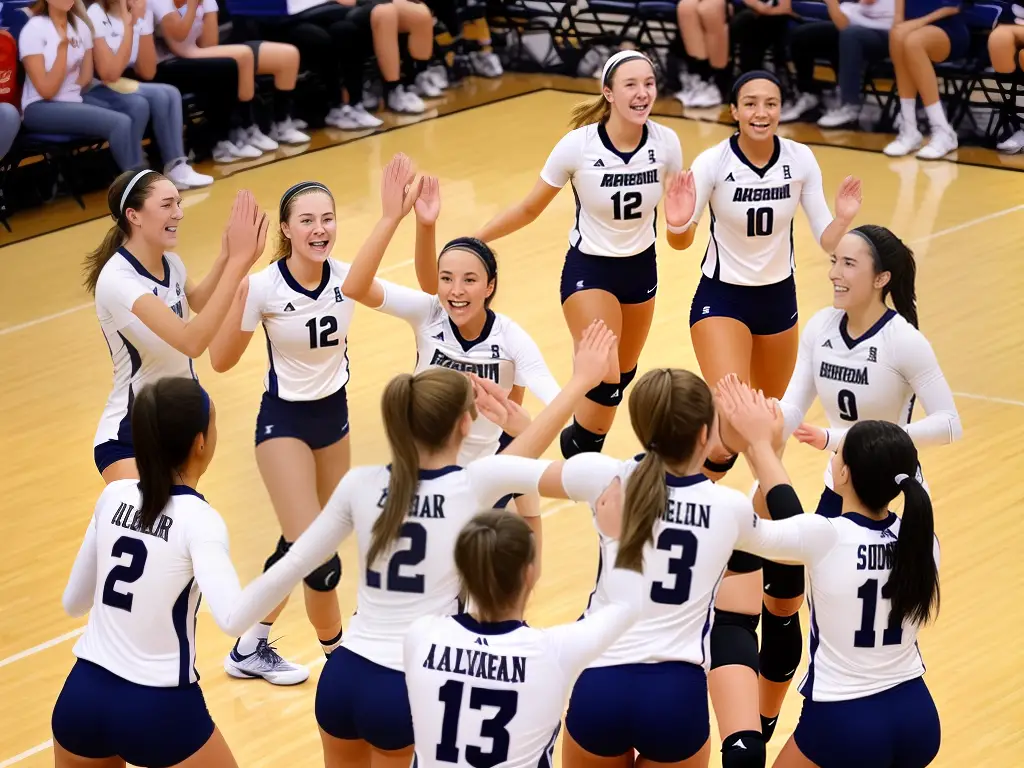
Height is not everything in volleyball
Despite these challenges, a common misconception about volleyball is that height is everything in the game. While having tall players can be an advantage in some aspects, such as hitting and blocking, it is not the only factor that determines a player’s success. In fact, skills, agility, and intelligence in volleyball are just as important, if not more so, and can often make up for a lack of height in players. This highlights the importance of a well-rounded skillset and diverse team in being successful in the sport.
Firstly, having exceptional skills in volleyball is crucial for all players, regardless of their height. Skills such as passing, setting, serving, and digging are essential for a team’s success. A shorter player with excellent passing and digging skills can contribute greatly to their team by consistently setting up their teammates for successful attacks. Similarly, accurate serving and setting can catch the opposing team off guard and lead to points, even if the player is not the tallest on their team.
Agility is another crucial aspect of volleyball that can make up for a lack of height in players. Quick reflexes and the ability to move swiftly on the court can be a gamechanger in both offense and defense. For instance, shorter players with good agility can often cover a lot of ground on the court and be effective in digging, which can save points and frustrate opponents. On the offense, agility allows players to change their attack strategy quickly, making it harder for the opposing team to predict and defend against their spikes and tips.
In addition to skills and agility, intelligence plays a significant role in volleyball success. Intelligent players are able to read the game, anticipate their opponents’ moves, and exploit their weaknesses. For example, a smaller player can use their knowledge of the game to position themselves in the right place at the right time. This can lead to successful digs or placing the ball in a spot where the opposing team is most vulnerable. Smart decision-making on the court can often compensate for a lack of height, as players are able to outthink and outmaneuver their taller counterparts.
Lastly, effective communication and teamwork are key components of any successful volleyball team. This applies to athletes of all heights, as it is essential for players to work together, trust each other, and have a strong team chemistry on the court. Players who can communicate well and support their teammates often provide a significant boost to the morale and overall performance of the team. In conclusion, while height can be beneficial in volleyball, it is essential to remember that there are other vital aspects such as skills, agility, and intelligence that determine the success of a player and their team.
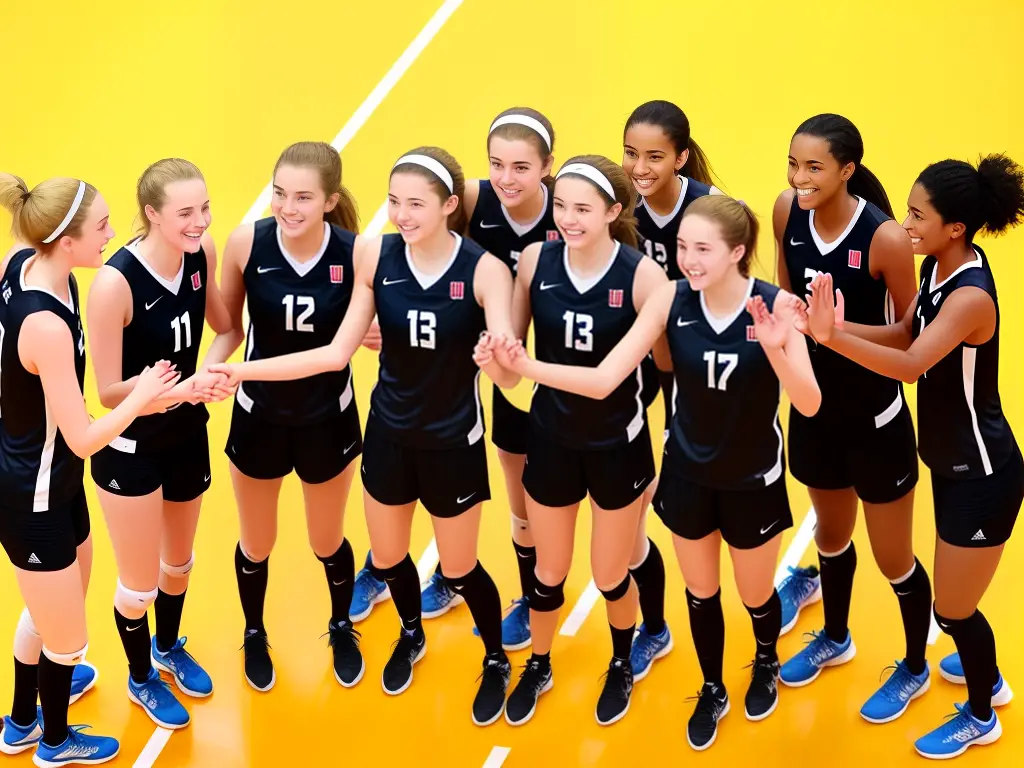
Men’s Volleyball: Breaking the Misconception
Moving on to another topic, it is essential to address a common misconception about who plays volleyball. Men’s volleyball has been around for just as long as women’s volleyball, but it is often mistakenly believed that only girls play the sport. In reality, men’s volleyball has a rich history and has grown significantly in popularity over the years, at both professional and Olympic levels. This fact highlights the importance of recognizing and appreciating the contributions of both male and female athletes to the sport of volleyball.
In fact, the first men’s volleyball game was played in 1895, just a year after the sport was invented. William G. Morgan, the inventor of volleyball, organized the first men’s game at his Holyoke, Massachusetts YMCA, and the sport quickly spread to other YMCA facilities across the United States.
Men’s volleyball made its first appearance in the Olympics in 1964 during the Tokyo games, where the Soviet Union won the gold medal. Since then, men’s volleyball has been a prominent event in the Olympics, showcasing the incredible talent and athleticism of male volleyball athletes from around the world.
Brazil, Italy, and the United States are some of the dominant countries in the men’s Olympic volleyball scene, all having won multiple gold, silver, and bronze medals. The United States is a notable powerhouse in men’s volleyball, having won four Olympic gold, three silver, and two bronze medals.
The Fédération Internationale de Volleyball (FIVB) organizes the Men’s Volleyball World Championship, the most prestigious international volleyball tournament for men, held every four years since 1949. Other popular professional men’s volleyball events include the FIVB World Cup, the FIVB World League, and the European Volleyball Championship.
Across the United States, over 100 NCAA men’s volleyball programs compete at the Division I, II, and III levels. Additionally, more than 22,000 boys participate in high school volleyball programs, according to the National Federation of State High School Associations. The growth of men’s volleyball programs at both the collegiate and high school levels provides young male athletes with the opportunity to develop their skills and pursue volleyball as a competitive sport.
One common misconception about volleyball is that it’s a sport only played by girls, but this is far from accurate. Men’s volleyball has a rich history and has experienced significant growth at professional and Olympic levels, highlighting its widespread appeal among both men and women athletes. The inclusion of men’s volleyball in international competitions and the expansion of collegiate and high school programs have paved the way for male athletes to showcase their skills and contribute to the sport’s overall popularity. As volleyball continues to evolve and grow, so will men’s involvement, debunking the myth that this game is only for girls.
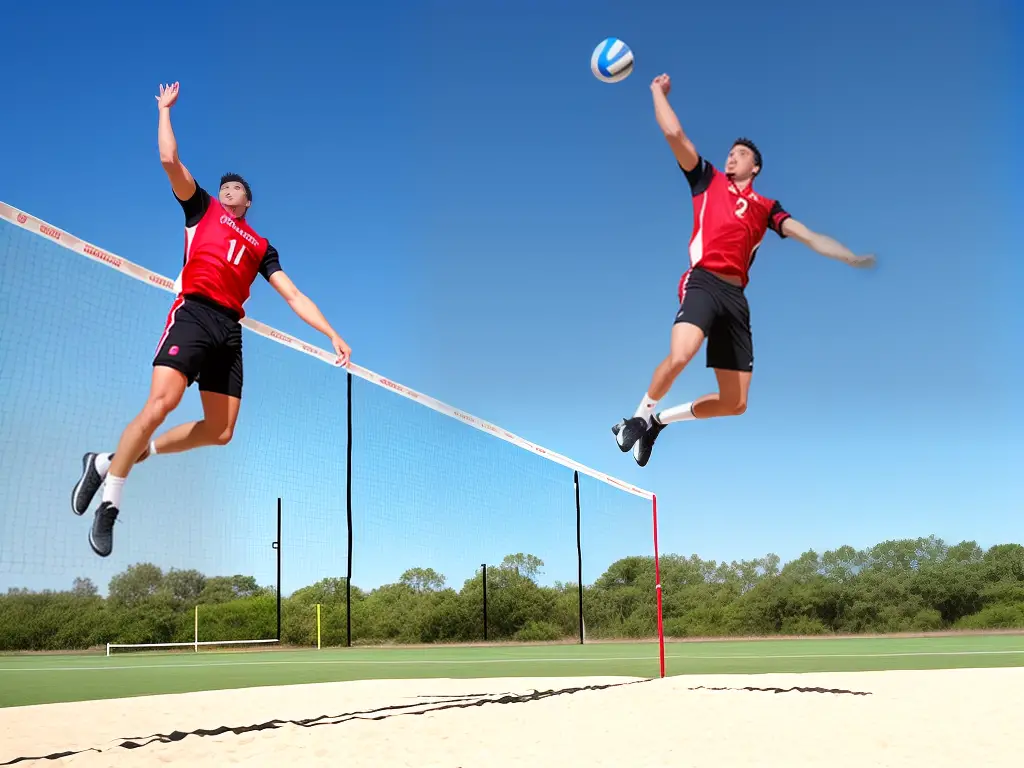
Skills and Attributes Necessary for Success in Volleyball
Another misunderstanding is the idea that all volleyball players need to have a strong vertical jump in order to be successful. While a powerful jump can certainly be an advantage, it isn’t the only important aspect of a player’s skill set. Technical abilities, court awareness, strength, agility, and teamwork are equally vital to success in the sport. In essence, there’s much more to being a great volleyball player than just being able to jump high.
Technical Abilities
Technical abilities include various skills like serving, passing, setting, hitting, and blocking. Each of these skills is essential for a volleyball player, and they all require practice and repetition to improve. A player with a strong serve and excellent passing technique can be just as valuable to a team as someone with an impressive vertical jump. Good technique and smart decision-making often outweigh raw jumping ability on the volleyball court.
Court Awareness
Court awareness is another vital aspect of volleyball. A player with good court awareness can anticipate the movements of the opposing team, read their intentions, and position themselves effectively to defend or attack. This skill allows players who may not have the highest vertical jump to still contribute significantly to their team’s performance by making smarter decisions and ensuring that they are in the right place at the right time.
Strength and Agility
Strength and agility are essential physical attributes for any volleyball player. Players require strength and power in their arms, legs, core, and back to perform various skills, such as hitting and blocking, effectively. Similarly, agility helps players move quickly across the court, reacting to the ball’s movement and changing directions as needed. These qualities are not dependent on a player’s jumping ability and can be developed with proper training.
Teamwork
Lastly, teamwork plays a crucial role in volleyball. Since the sport requires constant communication and coordination between all the team members, players with strong teamwork skills can significantly contribute to their team’s success through effective communication and collaboration. Being a good teammate means supporting and trusting others on the court while still being accountable for one’s actions.
In conclusion, success in volleyball involves more than just having a high vertical jump. It requires a well-rounded skill set that includes good technique, court awareness, strength, agility, and teamwork. These elements can contribute to a player’s success just as much or even more than their jumping ability, and developing these skills through dedicated practice and training is essential for any aspiring volleyball player.
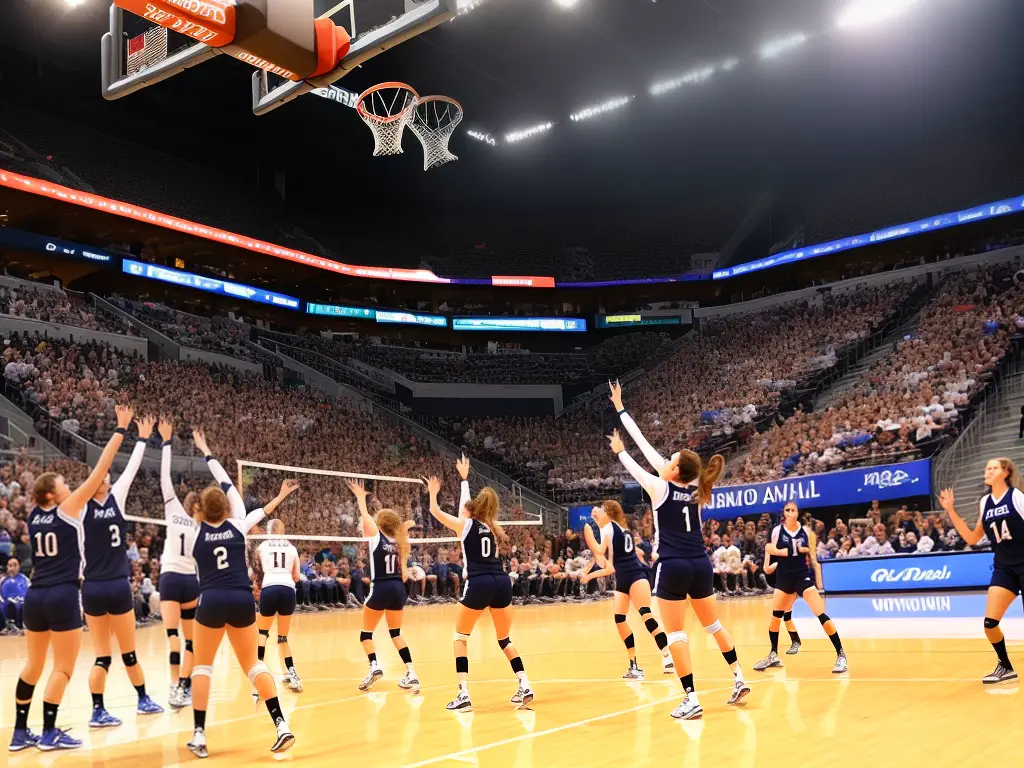
The Physical Demands of Volleyball
One common misconception about volleyball is that it is not a physically demanding sport. However, this is far from the truth, as the sport requires a significant amount of cardiovascular endurance, muscular strength, and flexibility. Players must be able to perform repetitive, high-intensity movements for extended periods while maintaining focus and coordinating with their teammates. This further emphasizes the importance of developing a well-rounded skill set and being committed to practice and training.
Cardiovascular endurance is crucial in volleyball because players are constantly moving, jumping, and performing intense physical actions throughout the course of a match. This requires the heart and lungs to work efficiently to provide oxygen to the muscles and remove waste products. An athlete with poor cardiovascular endurance will quickly become fatigued, which can impair their performance and increase the risk of injury.
Muscular strength is also essential for volleyball players, as they must be able to generate significant power when spiking, blocking, and serving the ball. This requires strong leg, core, and upper body muscles. A player who lacks muscular strength may struggle to produce the necessary force to be effective on the court and might be unable to keep up with their opponents. Moreover, having good muscular strength can help prevent injuries caused by the repetitive and high-impact nature of the sport.
Flexibility is another crucial component of physical conditioning for volleyball players. A flexible athlete can move more efficiently and fluidly on the court, allowing them to better perform certain athletic skills, such as diving for a ball or jumping to block a spike. In addition, a flexible player might be less prone to injury, as their muscles and joints are able to accommodate the strain of various volleyball-specific movements.
Being physically fit and well-rounded is crucial when it comes to excelling in volleyball. Players must focus on their cardiovascular endurance, muscular strength, and flexibility in order to perform at their best and maintain their health. Proper training, combined with a comprehensive understanding of the sport’s demands, allows volleyball players to reap the benefits of this exhilarating and physically demanding game.
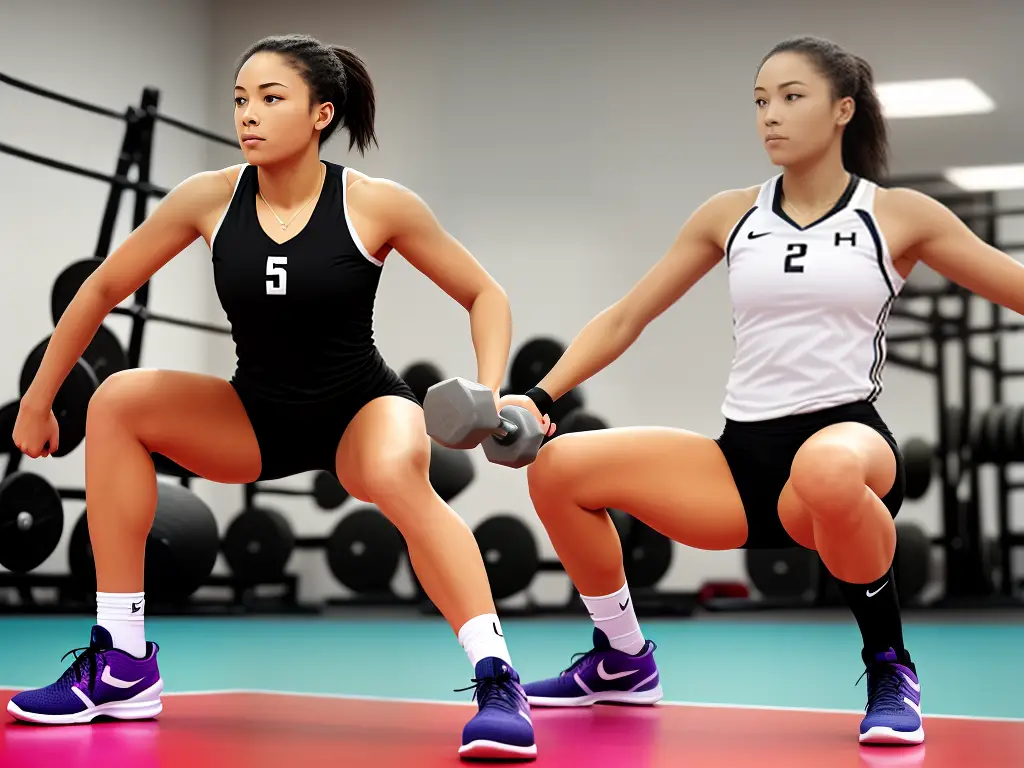
Understanding Volleyball Positions
Alongside physical fitness, it is also essential for players to understand the specific responsibilities, skills, and techniques that come with various positions in volleyball. A common misconception is that it is easy to play multiple roles within the sport. While some athletes may be versatile enough to perform well in different positions, mastering one role doesn’t guarantee success in others. Therefore, it’s crucial for players to dedicate time and effort to truly understand and develop their abilities in their chosen positions.
The setter is considered the quarterback of the team, responsible for running the offense and making crucial decisions during the game. They must have exceptional ball-handling skills, excellent court awareness, and the ability to read the opposing team’s defense. A good setter should be able to deliver accurate sets to various locations on the court, allowing their teammates to attack the ball effectively. To excel in this role, a player must practice setting from different locations and angles, as well as work on their physical fitness in order to have quick feet and good body control.
The hitter, also known as an outside or middle hitter, is a vital offensive player on the team. They must possess a powerful and accurate arm swing, strong vertical jumping ability, and excellent timing. Hitters must also be well-versed in different hitting strategies, such as hitting down the line, crosscourt, or tipping the ball over the block. Their ability to read the opposing blocker and make split-second decisions is crucial to success. Learning to hit effectively takes time, practice, and proper body mechanics.
Blockers are essential for disrupting an opponent’s offensive play. They must have excellent jumping ability, strength, and good hand-eye coordination in order to block or redirect the opponent’s attacks. Good blockers also need to have strong communication skills, as they work closely with the other blockers and the back-row defenders to cover their assigned areas. As a blocker, it is important to learn proper blocking techniques and positional awareness to effectively defend against the opponents’ hitters.
The libero is a specialized defensive player who does not rotate with the other players but substitutes freely, usually for middle or back-row players. Their primary responsibilities are passing and digging, requiring excellent agility, quickness, and the ability to read the opposing team’s hitters. Liberos must also have strong communication skills, as they serve as the team’s defensive leader on the court. To excel in this role, a player needs to be proficient in serve receive, passing, and digging techniques, as well as understanding the importance of their defensive positioning.
In the world of volleyball, understanding the various roles and responsibilities of each player can make a big difference in the success of a team. Setters, hitters, blockers, and liberos all have specific skills they need to excel in their respective positions. Focusing on developing proficiency in one or more of these roles can lead to a more cohesive and successful team overall.
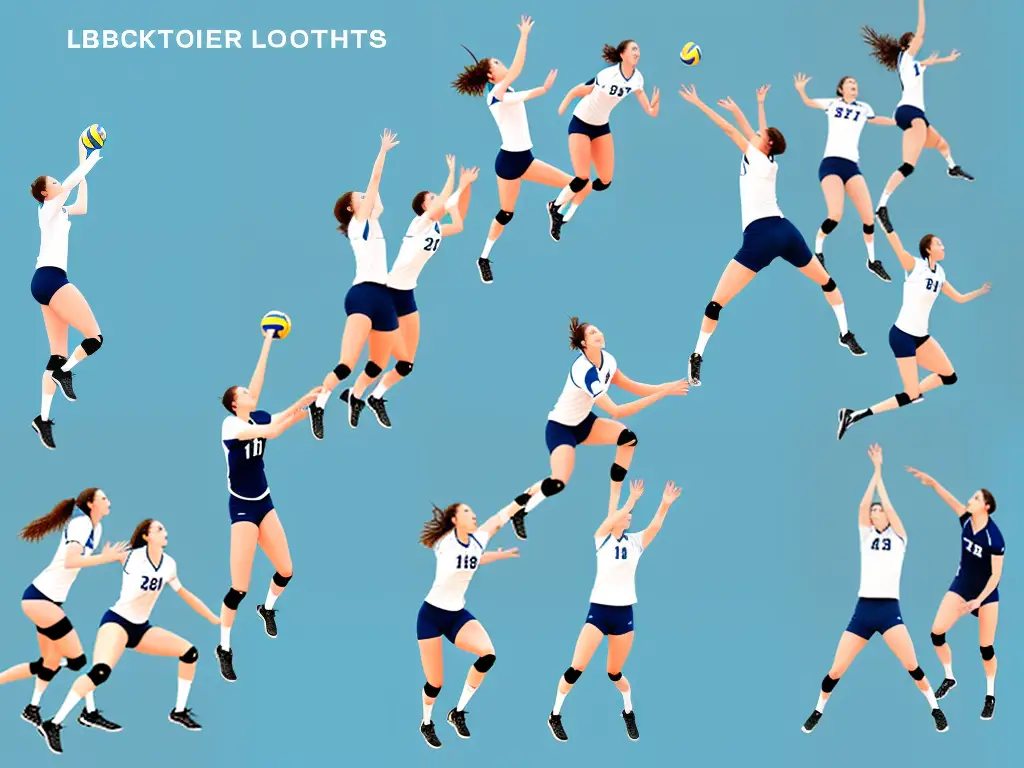
The Importance of Receiving, Setting, Attacking, and Defense in Volleyball
While serving is often thought of as the most crucial skill in volleyball, it’s important to remember that a well-rounded team needs more than just a strong server. A successful team must also master the art of receiving, passing, and setting. By recognizing the importance of these fundamental skills and fostering their development across the team, players can achieve greater success on the court and work more effectively as a unit.
Receiving, also known as passing, is crucial in volleyball because it is the first contact a team makes with the ball after the opponent’s serve. A team with strong receivers can control the ball well and set up effective offensive plays. If a team cannot pass effectively, even the most powerful serves can be useless, as the team will struggle with rallying and scoring points. Therefore, focusing on improving receiving skills is just as important as working on powerful serves.
Another critical skill in volleyball is setting. The setter is responsible for delivering a precise and well-timed pass to the attacking players, who then spike the ball over the net. A team with an accurate and consistent setter can create more scoring opportunities and increase their chances of success. Moreover, a skilled setter is capable of making quick and strategic decisions to outsmart the opposing team’s blockers and defenders. Thus, teams should also focus on nurturing a strong and versatile setter to improve their performance.
A well-rounded volleyball team also requires proficient attackers, including outside hitters, middle hitters, and opposite hitters. Each of these players holds a vital role in the team’s offensive strategy. Outside hitters are often the primary attackers and must be adaptable to various situations on the court. Middle hitters are essential for quick attacks and blocking. Opposite hitters, also known as right-side hitters, serve as backup attackers and provide defensive support. By having a balanced set of hitters, a volleyball team can efficiently apply pressure on the opponents and score points from multiple positions on the court.
A strong volleyball team not only requires a powerful offense but also an effective defensive strategy. This includes having a solid and alert back-row, with a skilled libero specializing in defense and passing. By developing excellent digging and blocking skills, a team can neutralize the opponent’s powerful attacks and even turn defense into offense. Focusing on improving these aspects of the game, as well as serving, can result in the formation of a truly well-rounded and successful volleyball team.
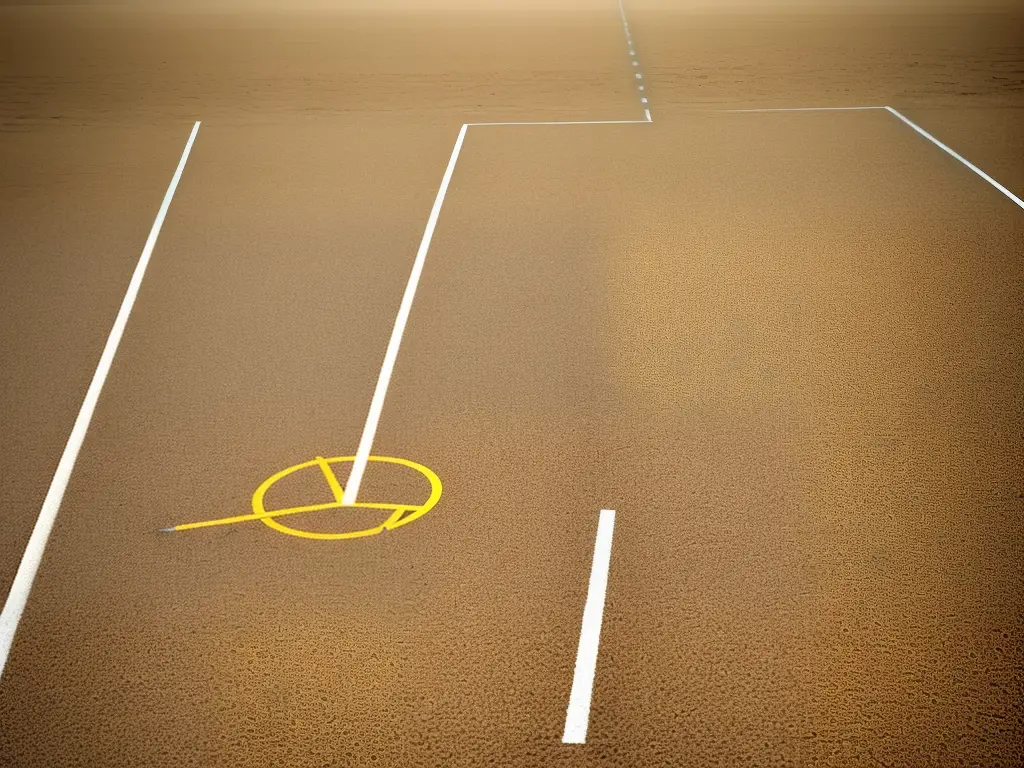
Strategy in Volleyball
There are also common misconceptions regarding the importance of strategy in volleyball, with some believing it is not necessary. However, this is far from accurate. Just like any other competitive sport, volleyball requires tactical thinking, game planning, and decision-making based on the opposing team’s strengths and weaknesses. Thus, an effective volleyball team must have a strong combination of multiple skills and excellent teamwork, with tactical choices being vital to success.
For example, teams must be able to read their opponents’ tendencies and adjust their game plan accordingly. This involves understanding how the other team is playing and figuring out the best course of action to take advantage of their weaknesses. For instance, if one team has a strong server, it is essential for the opposing team to come up with effective strategies to pass their serve and reduce the chances of the serving team scoring points.
Another strategic aspect in volleyball is the communication among teammates. Since volleyball is a team sport, good communication is crucial for players to understand each other’s intentions and make quick decisions during a game. Teams that work well together and communicate effectively can quickly respond to potential threats or opportunities, giving them an advantage over their opponents.
Furthermore, positioning and rotation in volleyball plays a significant role in the overall outcome of the game. Players must be aware of their roles and positions on the court, and coaches must plan the best lineup options and rotations to maximize their team’s performance. Additionally, having well-timed substitutions can help keep players fresh throughout a match and potentially exploit an opponent’s weakness in their lineup.
Volleyball is a dynamic and exciting sport that requires strategy and planning, coupled with effective communication and adaptation to opponents’ tactics, to be successful. There is much more to this game than simply hitting the ball over the net, making it enjoyable and complex for anyone interested in playing or watching it.
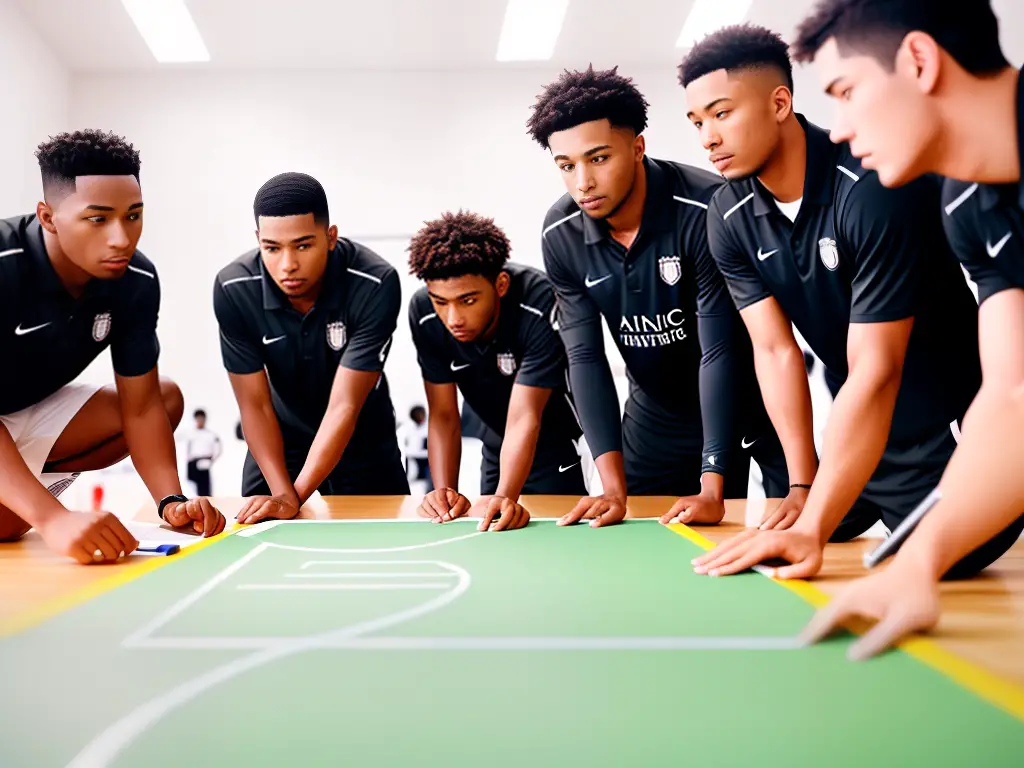
The Importance of Teamwork in Volleyball
Contrary to a common misconception, volleyball demands a high degree of teamwork, communication, cooperation, and trust among teammates. Playing the game without these elements is like building a tower with one hand: nearly impossible, and the final result will be less than impressive. So, always remember to rely on good teamwork to excel in volleyball and enjoy the full experience.
Communication is crucial to success in volleyball. Every player on the court must be aware of their role and duties and adjust to ever-changing dynamics during the game. Players must communicate assertively and accurately with each other, calling out crucial information such as player positions, the direction of balls, or how to adjust strategy based on the opposing team’s setup. Good communication ensures that each player understands the game plan and knows their responsibilities. Without it, the team can become disorganized, leading to weak defenses and missed opportunities to score points.
Cooperation is key in volleyball as well. Each player has a specialized role, such as a setter, hitter, or blocker, and they all must work together to create successful plays. For instance, the setter relies on the digger to pass the ball accurately, so they can set the hitter for a kill. If one player fails to execute their role, the entire play can fall apart. When all six teammates on the court cooperate seamlessly, they create a formidable force that is challenging for the opposing team to defeat.
Trust among teammates is another essential factor in achieving success in volleyball. Players must trust that their teammates will be able to execute their roles efficiently and depend on each other to cover their section of the court. This trust is built over time through practice, where teammates can observe each other’s capabilities and learn to rely on each other to perform complex plays. Trust and teamwork go hand in hand because when teammates trust one another, they are more likely to work together effectively and achieve their goals.
Volleyball is a sport that strongly emphasizes the importance of teamwork in order to achieve success. Players must effectively communicate, cooperate, and trust each other both on and off the court. In addition, teammates need to support one another and provide constructive criticism to help improve their collective skills. Recognizing individual strengths and weaknesses and working together to address them will lead to significant progress for the whole team. Overcoming the misconception that volleyball does not require teamwork is crucial to developing a strong, unified team.
Differences Between Beach Volleyball and Indoor Volleyball
There are various forms of volleyball, such as beach volleyball and indoor volleyball, which may seem similar at first glance. However, these two variations have distinct differences that impact the playing strategies and techniques. One of the most obvious differences is the playing surface – beach volleyball is played on sand, while indoor volleyball is played on a solid court. Being aware of these differences allows players to adapt their skills accordingly and contributes to the overall effectiveness of the team.
Another notable difference between beach volleyball and indoor volleyball is the court size. A standard beach volleyball court measures 16 x 8 meters, while an indoor volleyball court measures 18 x 9 meters. This smaller court size in beach volleyball makes it necessary for players to cover more ground and adapt their playing style to the space they have available.
The number of players on the court is another major difference between beach volleyball and indoor volleyball. Beach volleyball teams consist of only two players, compared to the six players on an indoor volleyball team. This difference significantly impacts the strategy and tactics used during a match. In beach volleyball, players must be skilled in all aspects of the game, as they need to be able to serve, pass, set, attack, and defend. In indoor volleyball, players often have specialized roles based on their individual skills, such as being a setter, outside hitter, or libero.
The scoring system in beach and indoor volleyball also differs. In beach volleyball, a match is played to the best of three sets, with each set requiring 21 points to win (except for the third and deciding set, which goes to 15 points). In indoor volleyball, teams play to the best of five sets, and each set requires 25 points to win. Beach volleyball games can be quicker and more intense due to their shorter and more demanding sets.
There are also differences in the rules between beach and indoor volleyball, such as the way the ball can be played. In indoor volleyball, the ball can be played off any part of the body, while in beach volleyball, certain techniques and touches are not allowed, such as open-hand dinks or setting over the net. Additionally, there are no substitutions in beach volleyball, whereas indoor volleyball allows for substitutions in accordance with team strategy. These variations in rules and gameplay contribute to the unique identities of beach volleyball and indoor volleyball and debunk the misconception that the two sports are identical.
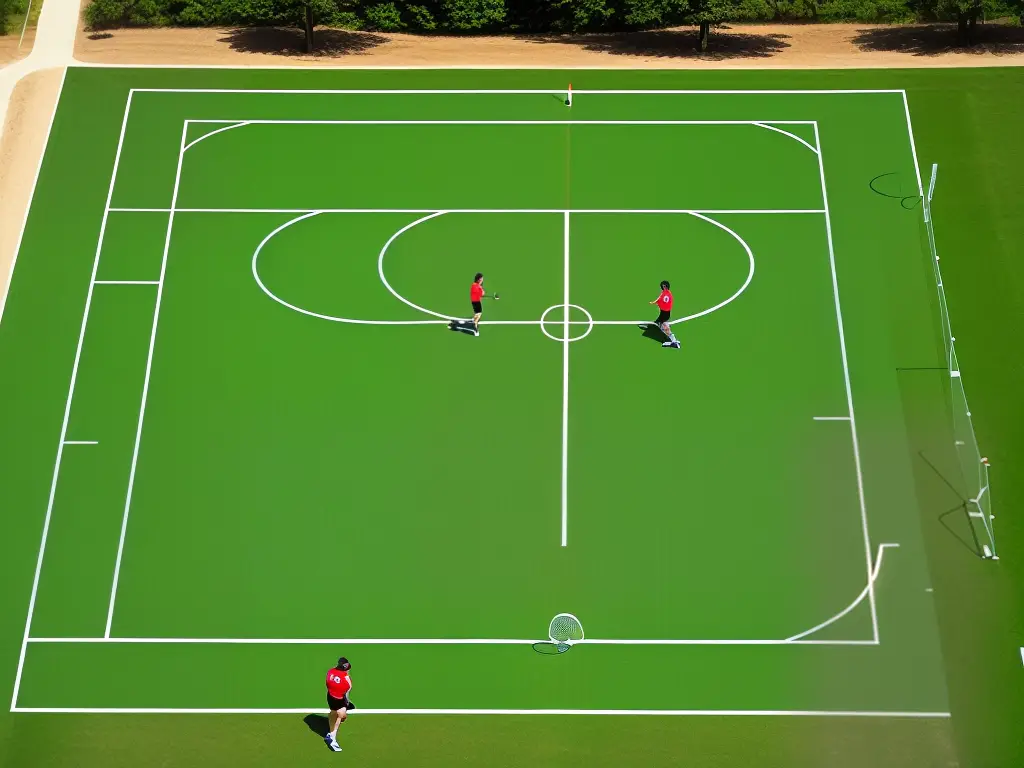
Ultimately, recognizing and dispelling these common volleyball misconceptions allows for a broader understanding of the sport. This newfound knowledge can empower players to focus on developing various skills, qualities, and tactics to excel in volleyball, rather than relying on outdated beliefs and notions. Furthermore, it helps fans and onlookers appreciate the complexities of volleyball, leading to a healthier and more inclusive sports environment for all.
